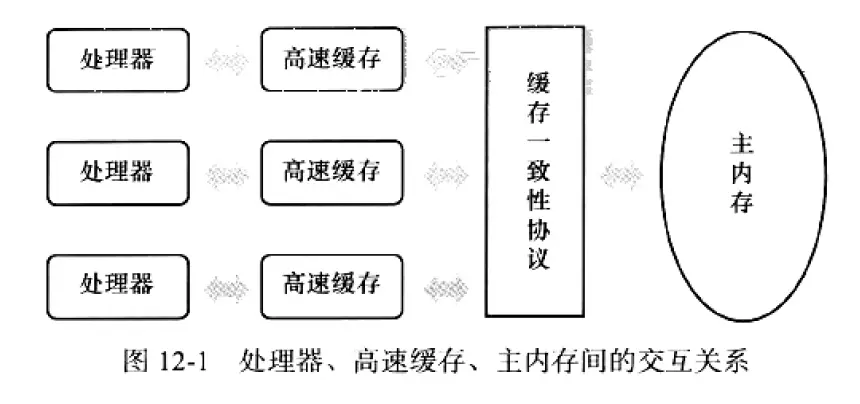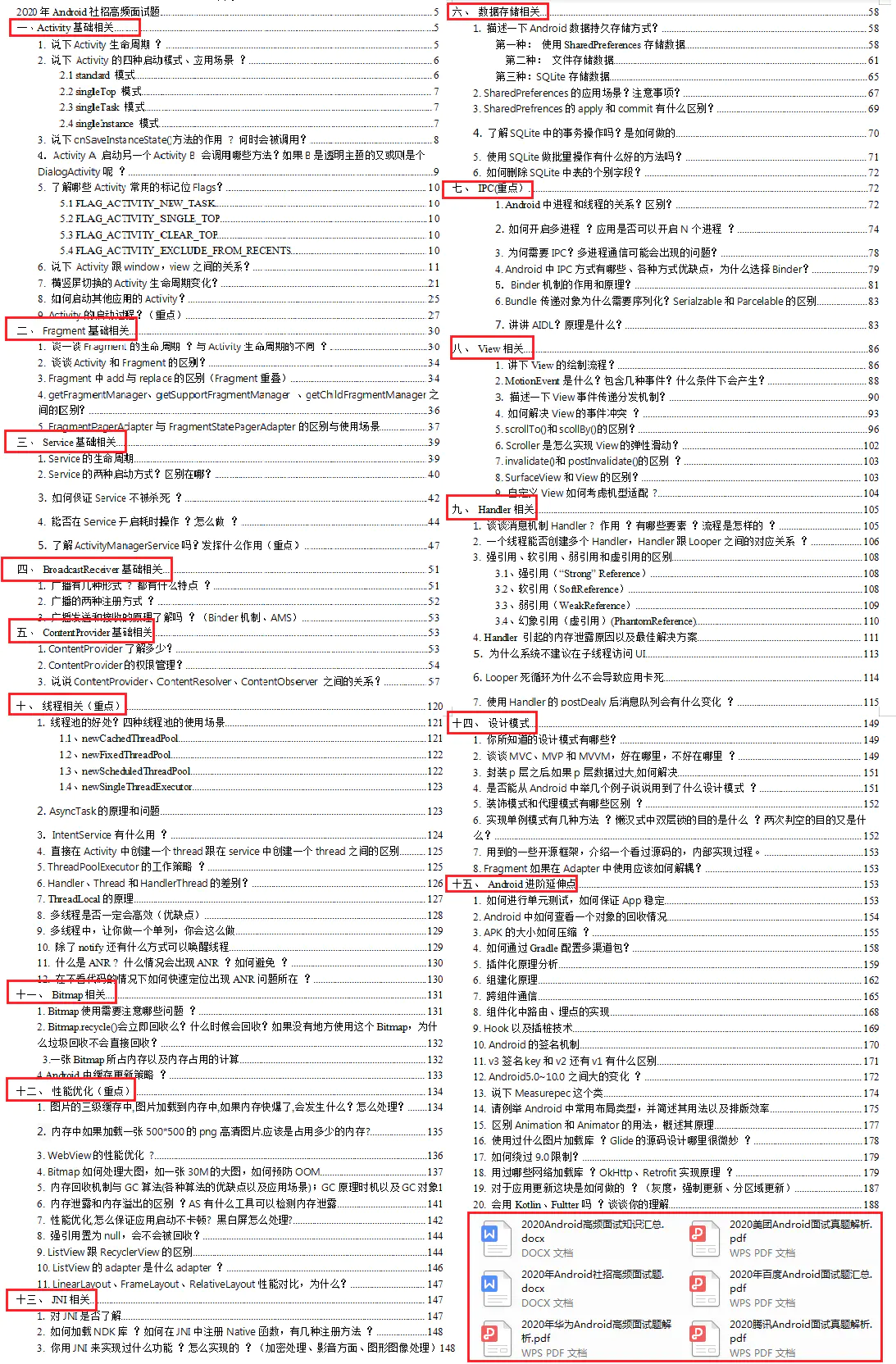为什么80%的码农都做不了架构师?>>> 
为了比较一下ReentrantLock和synchronized的性能,做了一下性能测试:
得出结论:
(1)使用Lock的性能比使用synchronized关键字要提高4~5倍;
(2)使用信号量实现同步的速度大约比synchronized要慢10~20%;
(3)使用atomic包的AtomicInter速度是比Lock要快1一个数量级。
ReentrantLock 类
java.util.concurrent.lock 中的 Lock 框架是锁定的一个抽象,它允许把锁定的实现作为 Java 类,而不是作为语言的特性来实现。这就为 Lock 的多种实现留下了空间,各种实现可能有不同的调度算法、性能特性或者锁定语义。ReentrantLock 类实现了 Lock,它拥有与 synchronized 相同的并发性和内存语义,但是添加了类似锁投票、定时锁等候和可中断锁等候的一些特性。此外,它还提供了在激烈争用情况下更佳的性能。(换句话说,当许多线程都想访问共享资源时,JVM 可以花更少的时候来调度线程,把更多时间用在执行线程上。)
reentrant 锁意味着什么呢?简单来说,它有一个与锁相关的获取计数器,如果拥有锁的某个线程再次得到锁,那么获取计数器就加1,然后锁需要被释放两次才能获得真正释放。这模仿了 synchronized 的语义;如果线程进入由线程已经拥有的监控器保护的 synchronized 块,就允许线程继续进行,当线程退出第二个(或者后续)synchronized 块的时候,不释放锁,只有线程退出它进入的监控器保护的第一个 synchronized 块时,才释放锁。
在查看清单 1 中的代码示例时,可以看到 Lock 和 synchronized 有一点明显的区别 —— lock 必须在 finally 块中释放。否则,如果受保护的代码将抛出异常,锁就有可能永远得不到释放!这一点区别看起来可能没什么,但是实际上,它极为重要。忘记在 finally 块中释放锁,可能会在程序中留下一个定时bomb,当有一天bomb爆炸时,您要花费很大力气才有找到源头在哪。而使用同步,JVM 将确保锁会获得自动释放。
Test的源码
view plaincopy to clipboardprint?
01.public abstract class Test {
02. protected String id;
03. protected CyclicBarrier barrier;
04. protected long count;
05. protected int threadNum;
06. protected ExecutorService executor;
07.
08. public Test(String id, CyclicBarrier barrier, long count, int threadNum,
09. ExecutorService executor) {
10. this.id = id;
11. this.barrier = barrier;
12. this.count = count;
13. this.threadNum = threadNum;
14. this.executor = executor;
15. }
16.
17. public void startTest() {
18.
19. long start = System.currentTimeMillis();
20.
21. for (int j = 0; j
23. @Override
24. public void run() {
25. for (int i = 0; i
27. }
28.
29. try {
30. barrier.await();
31.
32. } catch (InterruptedException e) {
33. e.printStackTrace();
34. } catch (BrokenBarrierException e) {
35. e.printStackTrace();
36. }
37. }
38. });
39. }
40.
41. try {
42. barrier.await();
43. } catch (InterruptedException e) {
44. e.printStackTrace();
45. } catch (BrokenBarrierException e) {
46. e.printStackTrace();
47. }
48.
49. // 所有线程执行完成之后,才会跑到这一步
50. long duration = System.currentTimeMillis() - start;
51. System.out.println(id + " = " + duration);
52. }
53.
54. protected abstract void test();
55.}
public abstract class Test {
protected String id;
protected CyclicBarrier barrier;
protected long count;
protected int threadNum;
protected ExecutorService executor;
public Test(String id, CyclicBarrier barrier, long count, int threadNum,
ExecutorService executor) {
this.id = id;
this.barrier = barrier;
this.count = count;
this.threadNum = threadNum;
this.executor = executor;
}
public void startTest() {
long start = System.currentTimeMillis();
for (int j = 0; j
@Override
public void run() {
for (int i = 0; i
}
try {
barrier.await();
} catch (InterruptedException e) {
e.printStackTrace();
} catch (BrokenBarrierException e) {
e.printStackTrace();
}
}
});
}
try {
barrier.await();
} catch (InterruptedException e) {
e.printStackTrace();
} catch (BrokenBarrierException e) {
e.printStackTrace();
}
// 所有线程执行完成之后,才会跑到这一步
long duration = System.currentTimeMillis() - start;
System.out.println(id + " = " + duration);
}
protected abstract void test();
}
测试类ReentreLockTest 源码
view plaincopy to clipboardprint?
01.import thread.test.Test;
02.
03.public class ReentreLockTest {
04. private static long COUNT = 1000000;
05. private static Lock lock = new ReentrantLock();
06. private static long lockCounter = 0;
07. private static long syncCounter = 0;
08. private static long semaCounter = 0;
09. private static AtomicLong atomicCounter = new AtomicLong(0);
10. private static Object syncLock = new Object();
11. private static Semaphore mutex = new Semaphore(1);
12.
13. public static void testLock(int num, int threadCount) {
14.
15. }
16.
17. static long getLock() {
18. lock.lock();
19. try {
20. return lockCounter;
21. } finally {
22. lock.unlock();
23. }
24. }
25.
26. static long getSync() {
27. synchronized (syncLock) {
28. return syncCounter;
29. }
30. }
31.
32. static long getAtom() {
33. return atomicCounter.get();
34. }
35.
36. static long getSemaphore() throws InterruptedException {
37. mutex.acquire();
38.
39. try {
40. return semaCounter;
41. } finally {
42. mutex.release();
43. }
44. }
45.
46. static long getLockInc() {
47. lock.lock();
48. try {
49. return ++lockCounter;
50. } finally {
51. lock.unlock();
52. }
53. }
54.
55. static long getSyncInc() {
56. synchronized (syncLock) {
57. return ++syncCounter;
58. }
59. }
60.
61. static long getAtomInc() {
62. return atomicCounter.getAndIncrement();
63. }
64.
65. static class SemaTest extends Test {
66.
67. public SemaTest(String id, CyclicBarrier barrier, long count,
68. int threadNum, ExecutorService executor) {
69. super(id, barrier, count, threadNum, executor);
70. }
71.
72. @Override
73. protected void test() {
74. try {
75. getSemaphore();
76. } catch (InterruptedException e) {
77. e.printStackTrace();
78. }
79. }
80.
81. }
82.
83. static class LockTest extends Test {
84.
85. public LockTest(String id, CyclicBarrier barrier, long count,
86. int threadNum, ExecutorService executor) {
87. super(id, barrier, count, threadNum, executor);
88. }
89.
90. @Override
91. protected void test() {
92. getLock();
93. }
94.
95. }
96.
97. static class SyncTest extends Test {
98.
99. public SyncTest(String id, CyclicBarrier barrier, long count,
100. int threadNum, ExecutorService executor) {
101. super(id, barrier, count, threadNum, executor);
102. }
103.
104. @Override
105. protected void test() {
106. getSync();
107. }
108.
109. }
110.
111. static class AtomicTest extends Test {
112.
113. public AtomicTest(String id, CyclicBarrier barrier, long count,
114. int threadNum, ExecutorService executor) {
115. super(id, barrier, count, threadNum, executor);
116. }
117.
118. @Override
119. protected void test() {
120. getAtom();
121. }
122.
123. }
124.
125. public static void test(String id, long count, int threadNum,
126. ExecutorService executor) {
127.
128. final CyclicBarrier barrier = new CyclicBarrier(threadNum + 1,
129. new Thread() {
130.
131. @Override
132. public void run() {
133.
134. }
135. });
136.
137. System.out.println("==============================");
138. System.out.println("count = " + count + "\t" + "Thread Count = "
139. + threadNum);
140.
141. new LockTest("Lock ", barrier, COUNT, threadNum, executor).startTest();
142. new SyncTest("Sync ", barrier, COUNT, threadNum, executor).startTest();
143. new AtomicTest("Atom ", barrier, COUNT, threadNum, executor)
144. .startTest();
145. new SemaTest("Sema ", barrier, COUNT, threadNum, executor)
146. .startTest();
147. System.out.println("==============================");
148. }
149.
150. public static void main(String[] args) {
151. for (int i &#61; 1; i <5; i&#43;&#43;) {
152. ExecutorService executor &#61; Executors.newFixedThreadPool(10 * i);
153. test("", COUNT * i, 10 * i, executor);
154. }
155. }
156.}
import thread.test.Test;
public class ReentreLockTest {
private static long COUNT &#61; 1000000;
private static Lock lock &#61; new ReentrantLock();
private static long lockCounter &#61; 0;
private static long syncCounter &#61; 0;
private static long semaCounter &#61; 0;
private static AtomicLong atomicCounter &#61; new AtomicLong(0);
private static Object syncLock &#61; new Object();
private static Semaphore mutex &#61; new Semaphore(1);
public static void testLock(int num, int threadCount) {
}
static long getLock() {
lock.lock();
try {
return lockCounter;
} finally {
lock.unlock();
}
}
static long getSync() {
synchronized (syncLock) {
return syncCounter;
}
}
static long getAtom() {
return atomicCounter.get();
}
static long getSemaphore() throws InterruptedException {
mutex.acquire();
try {
return semaCounter;
} finally {
mutex.release();
}
}
static long getLockInc() {
lock.lock();
try {
return &#43;&#43;lockCounter;
} finally {
lock.unlock();
}
}
static long getSyncInc() {
synchronized (syncLock) {
return &#43;&#43;syncCounter;
}
}
static long getAtomInc() {
return atomicCounter.getAndIncrement();
}
static class SemaTest extends Test {
public SemaTest(String id, CyclicBarrier barrier, long count,
int threadNum, ExecutorService executor) {
super(id, barrier, count, threadNum, executor);
}
&#64;Override
protected void test() {
try {
getSemaphore();
} catch (InterruptedException e) {
e.printStackTrace();
}
}
}
static class LockTest extends Test {
public LockTest(String id, CyclicBarrier barrier, long count,
int threadNum, ExecutorService executor) {
super(id, barrier, count, threadNum, executor);
}
&#64;Override
protected void test() {
getLock();
}
}
static class SyncTest extends Test {
public SyncTest(String id, CyclicBarrier barrier, long count,
int threadNum, ExecutorService executor) {
super(id, barrier, count, threadNum, executor);
}
&#64;Override
protected void test() {
getSync();
}
}
static class AtomicTest extends Test {
public AtomicTest(String id, CyclicBarrier barrier, long count,
int threadNum, ExecutorService executor) {
super(id, barrier, count, threadNum, executor);
}
&#64;Override
protected void test() {
getAtom();
}
}
public static void test(String id, long count, int threadNum,
ExecutorService executor) {
final CyclicBarrier barrier &#61; new CyclicBarrier(threadNum &#43; 1,
new Thread() {
&#64;Override
public void run() {
}
});
System.out.println("&#61;&#61;&#61;&#61;&#61;&#61;&#61;&#61;&#61;&#61;&#61;&#61;&#61;&#61;&#61;&#61;&#61;&#61;&#61;&#61;&#61;&#61;&#61;&#61;&#61;&#61;&#61;&#61;&#61;&#61;");
System.out.println("count &#61; " &#43; count &#43; "\t" &#43; "Thread Count &#61; "
&#43; threadNum);
new LockTest("Lock ", barrier, COUNT, threadNum, executor).startTest();
new SyncTest("Sync ", barrier, COUNT, threadNum, executor).startTest();
new AtomicTest("Atom ", barrier, COUNT, threadNum, executor)
.startTest();
new SemaTest("Sema ", barrier, COUNT, threadNum, executor)
.startTest();
System.out.println("&#61;&#61;&#61;&#61;&#61;&#61;&#61;&#61;&#61;&#61;&#61;&#61;&#61;&#61;&#61;&#61;&#61;&#61;&#61;&#61;&#61;&#61;&#61;&#61;&#61;&#61;&#61;&#61;&#61;&#61;");
}
public static void main(String[] args) {
for (int i &#61; 1; i <5; i&#43;&#43;) {
ExecutorService executor &#61; Executors.newFixedThreadPool(10 * i);
test("", COUNT * i, 10 * i, executor);
}
}
}
结果
view plaincopy to clipboardprint?
01.&#61;&#61;&#61;&#61;&#61;&#61;&#61;&#61;&#61;&#61;&#61;&#61;&#61;&#61;&#61;&#61;&#61;&#61;&#61;&#61;&#61;&#61;&#61;&#61;&#61;&#61;&#61;&#61;&#61;&#61;
02.count &#61; 1000000 Thread Count &#61; 10
03.Lock &#61; 953
04.Sync &#61; 3781
05.Atom &#61; 78
06.Sema &#61; 4922
07.&#61;&#61;&#61;&#61;&#61;&#61;&#61;&#61;&#61;&#61;&#61;&#61;&#61;&#61;&#61;&#61;&#61;&#61;&#61;&#61;&#61;&#61;&#61;&#61;&#61;&#61;&#61;&#61;&#61;&#61;
08.&#61;&#61;&#61;&#61;&#61;&#61;&#61;&#61;&#61;&#61;&#61;&#61;&#61;&#61;&#61;&#61;&#61;&#61;&#61;&#61;&#61;&#61;&#61;&#61;&#61;&#61;&#61;&#61;&#61;&#61;
09.count &#61; 2000000 Thread Count &#61; 20
10.Lock &#61; 1906
11.Sync &#61; 8469
12.Atom &#61; 172
13.Sema &#61; 9719
14.&#61;&#61;&#61;&#61;&#61;&#61;&#61;&#61;&#61;&#61;&#61;&#61;&#61;&#61;&#61;&#61;&#61;&#61;&#61;&#61;&#61;&#61;&#61;&#61;&#61;&#61;&#61;&#61;&#61;&#61;
15.&#61;&#61;&#61;&#61;&#61;&#61;&#61;&#61;&#61;&#61;&#61;&#61;&#61;&#61;&#61;&#61;&#61;&#61;&#61;&#61;&#61;&#61;&#61;&#61;&#61;&#61;&#61;&#61;&#61;&#61;
16.count &#61; 3000000 Thread Count &#61; 30
17.Lock &#61; 2890
18.Sync &#61; 12641
19.Atom &#61; 219
20.Sema &#61; 15015
21.&#61;&#61;&#61;&#61;&#61;&#61;&#61;&#61;&#61;&#61;&#61;&#61;&#61;&#61;&#61;&#61;&#61;&#61;&#61;&#61;&#61;&#61;&#61;&#61;&#61;&#61;&#61;&#61;&#61;&#61;
22.&#61;&#61;&#61;&#61;&#61;&#61;&#61;&#61;&#61;&#61;&#61;&#61;&#61;&#61;&#61;&#61;&#61;&#61;&#61;&#61;&#61;&#61;&#61;&#61;&#61;&#61;&#61;&#61;&#61;&#61;
23.count &#61; 4000000 Thread Count &#61; 40
24.Lock &#61; 3844
25.Sync &#61; 17141
26.Atom &#61; 343
27.Sema &#61; 19782
28.&#61;&#61;&#61;&#61;&#61;&#61;&#61;&#61;&#61;&#61;&#61;&#61;&#61;&#61;&#61;&#61;&#61;&#61;&#61;&#61;&#61;&#61;&#61;&#61;&#61;&#61;&#61;&#61;&#61;&#61;











 京公网安备 11010802041100号
京公网安备 11010802041100号